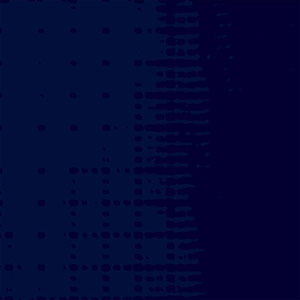 Released to commemorate one year since legendary artist Mika Vainio’s passing, long time fan and collaborator Richard Chartier has created a fitting tribute to the artist, his legacy, and also his undeniable influence on Chartier’s own work. The final product is less of an overt tribute, at least in sound, and functions more as a knowing homage that synergizes the core elements of Vainio's lengthy body of art via Chartier's undeniably nuanced and complex aesthetic.
Released to commemorate one year since legendary artist Mika Vainio’s passing, long time fan and collaborator Richard Chartier has created a fitting tribute to the artist, his legacy, and also his undeniable influence on Chartier’s own work. The final product is less of an overt tribute, at least in sound, and functions more as a knowing homage that synergizes the core elements of Vainio's lengthy body of art via Chartier's undeniably nuanced and complex aesthetic.
Chartier has stated that it was Vainio's work: solo, with Pan Sonic, and in the Ø and Philus guises, that reignited his career in experimental electronic music after a three year break some 20 years ago.The parallels in their art are distinctly different, but very much complementary.Vainio’s focus was often more rhythmic in nature, and sometimes challenging and harsh, but his use of clean, pure tones and electronic spaces can clearly be heard in Chartier's solo work, as well as via his Pinkcourtesyphone project.
The 40+ minute "Central" is subtle in its opening minutes:buzzing electronics, crackling static, and wide open spaces.White noise and wet distortion eventually are introduced, cutting through the digital fragments and otherwise fill the mix.Like Vainio's work, Chartier trades extensively in ultra high tinnitus-like frequencies that come and go, at times lying in the furthest reaches of human hearing.Unsurprisingly, this can be a bit unpleasant at times, but fitting since the result is not unlike some of Pan Sonic’s best work.
Eventually Chartier brings the mid-range up in more sustained passages, with a subtle bit of pulsation that could almost pass for a rhythm.He adjusts the diverging layers:tones, static, pulses, all things that appeared in Vainio’s work.Here, however, they are presented almost clinically, dissected out to study their most basic elements.Crackles of interference are melded into pseudo-rhythms as tightly compacted, sustained drones underscore the proceedings.After a lengthy section of shimmering, metallic electronics, the sound becomes hollower, almost mournful, as the piece comes to its quiet, sparse conclusion.
In comparison, the shorter "Unquiet" has a strong flow to it, but not the same extent of drastic shifts and evolution that can be heard in "Central".Chartier immediately creates a force to be reckoned with:cascading, stuttering electronics and stuttering noise surge out with more force than I am used to from his work.Here he clearly captures the more chaotic side of Vainio’s sound in the form of heavy fuzz and some low-end heavy rumbling layers.The essential components to "Unquiet" stay in place for most of the piece, so the sense of change is less prominent than it was on "Central", but within the confines of a seven minute composition this is no detriment at all.To mix things up, Chartier closes with a bit of interference and a lovely mournful bit of ambience that fits the intent of the album perfectly.
One of the reasons Richard Chartier excels with Central (for M. Vainio) is that he pays a fitting, reverential tribute to Mika Vainio and his enduring influence, but by emphasizing said influence more than an emulation or an unnecessary attempt direct interpretation.Themes from all of Vainio's body of work are here, but translated and interpreted through Chartier's understated, careful touch as a brilliant composer.There are some other moments that are not quite so subtle, especially throughout the aptly titled "Unquiet", but these act as a perfect synergy between Vainio’s more abrasive tendencies filtered through Chartier’s thoughtful deliberateness.The result is a loving tribute that illuminates the linkage between the two legendary sound artists as best as anything could.
samples:
 
Read More

